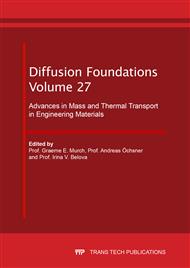p.73
p.90
p.99
p.115
p.122
p.136
p.166
p.177
p.186
Effect of Solvent Concentration on Scaling Butane Solvent Enhanced Oil Recovery Processes Using Reservoir Simulation
Abstract:
Understanding scaling of enhanced oil/bitumen recovery processes is essential in moving laboratory scale experimental results to field scale. Scaling theory for thermal processes is well understood and has been applied to steam processes. However, scaling of hybrid steam (thermal) /solvent (mass transfer) processes is still not well defined nor well understood. This paper investigates the scaling behavior of hybrid steam/butane gravity drainage processes using reservoir simulation (commercial thermal compositional simulator CMG STARSTM). Previous research has used reservoir simulation to confirm scaling groups for waterflooding. A similar strategy was used in this study whereby the scaling of a hybrid (steam) solvent oil recovery process was examined using reservoir simulations at three different reservoir scales: lab scale, semi-field scale and field scale to examine the influence of the mass transfer mechanisms of diffusion and dispersion on the scalability of the process. In particular, the influence of butane solvent concentration on scaling a steam/butane gravity drainage process was investigated by considering several butane mole fraction concentrations injected with steam (1%, 2%, 5%, 7%, 10%, 15%, 21%, 25% and 50%). Temperature contours, and mole fraction contours of butane in both the oil and gas phases were examined for various solvent injection concentrations to examine scalability. Numerical results are provided with no diffusion and dispersion, diffusion only, dispersion only and with both diffusion and dispersion added to the simulations. Results confirmed scalability of the process with no capillary effects when the simulation results were non-dimensionalized, although there were some issues with material balance errors in some of the simulation results particularly at high solvent concentrations. For low injection concentrations, the contours were almost identical (indicating scalability) for the three scales for the operating condition studied. In addition, capillary effects were also studied, and similar to scaling thermal processes, the capillarity effects influenced scalability of the process under the conditions studied particularly at higher injection concentrations. Scalability using reservoir simulation was generally preserved with low injection concentrations, but unusual behavior was observed at higher injection concentrations (>5%). Oil recovery curves were non-dimensionalized to make comparisons amongst the three scales. The oil recovery curves displayed an unusual S-shaped behavior at higher injection concentrations when capillary effects were included especially for the lab and semi-field scales. In all cases when all of the mechanisms are included (diffusion, dispersion and capillary effects), Scale 1 shows a much faster recovery than Scale 3 which suggests that the lab scale might temporally overestimate the field scale recovery for this particular process scenario.
Info:
Periodical:
Pages:
136-165
Citation:
Online since:
May 2020
Authors:
Price:
Сopyright:
© 2020 Trans Tech Publications Ltd. All Rights Reserved
Share:
Citation:


